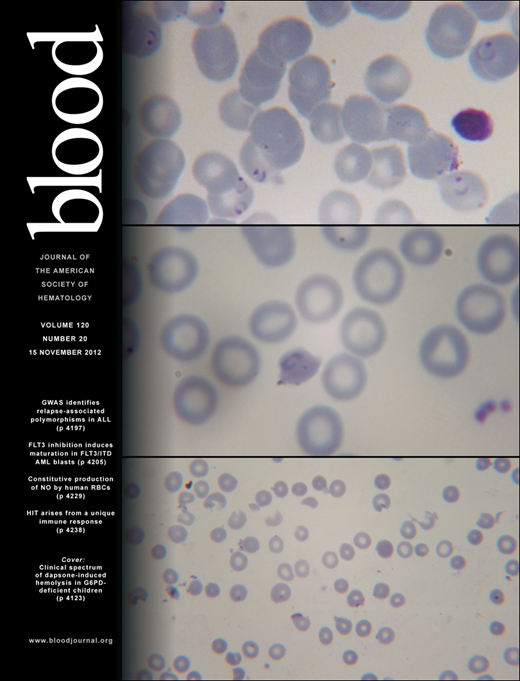In this issue of Blood, Sadoul et al demonstrate that histone deacetylase 6 (HDAC6) mediates platelet microtubule deacetylation in response to activation.1
The production of platelets by megakaryocytes requires an extraordinary feat of cellular remodeling. The tubulin cytoskeleton is central to this process. It provides the structural basis for proplatelets: long, filamentous extensions of megakaryocyte cytoplasm that bend and branch, projecting their tips into sinusoidal blood vessels so that platelets may bud off into the circulation.2 Considerable progress has been made in elucidating the biology of proplatelets. We now understand that their formation and maturation is a highly dynamic process, and that proplatelet behavior dictates both the form and—via organelle trafficking—the content of platelets. Recent work has yielded insights into the terminal stages of platelet biogenesis in vivo, indicating that rather than release perfectly formed platelets one by one, megakaryocytes shed large fragments of proplatelets, termed preplatelets, into the bloodstream.3 The latter undergo maturation and abscission to generate individual platelets.4
As a major structural component of proplatelets, tubulin therefore plays a critical role in platelet production. This is illustrated by the demonstration that deletion of the megakaryocyte-specific β-tubulin isoform β1 in mice results in a failure of proplatelet formation and subsequent thrombocytopenia.5 The regulation of the tubulin network within the megakaryocyte lineage, however, remains something of a mystery. This is particularly true of platelets, whose characteristic discoid shape is defined and maintained by a marginal band of microtubules. In response to activation, platelets undergo dramatic shape changes, involving a major reorganization of the tubulin cytoskeleton. Here, in an elegant series of experiments, Sadoul and colleagues demonstrate that the latter process is accompanied by profound changes in the acetylation status of microtubules.1 Within minutes of human platelets being allowed to spread on glass coverslips, tubulin was almost completely deacetylated. Over the course of several hours, as platelets began to retract, reacetylation occurred. The same phenomenon was observed when platelets were spread on glass coated with fibronectin, fibrinogen, or collagen, or induced to aggregate with arachidonic acid, adenosine diphosphate, or collagen.
Acetylation is one of a number of post-translation modifications (PTMs) that occur on microtubules, including detyrosination, glutamylation, and glycylation.6 These PTMs are thought to regulate stability and influence microtubule-based functions such as motor protein movement. While the marginal band of platelets is known to be highly acetylated,7 Sadoul et al's work is the first indication that microtubule acetylation in platelets is dynamically regulated. Deacetylation occurred in response to microtubule depolymerization induced by nocodazole, but not stabilization induced by taxol, suggesting that the process is driven by a deacetylase gaining access to its substrate. This would fit with the structural orientation of the major site of acetylation, lysine 40 of the N-terminal domain of α-tubulin, which is predicted to reside on the luminal face of microtubules.8
But which enzyme is responsible for deacetylation? After comparing the effects of different classes of deacetylase inhibitor, Sadoul and colleagues narrowed their focus to HDAC6, which along with Sirtuin 2 is known to be a key tubulin deacetylator.6 Examining platelets from HDAC6-deficient mice, they found that, at steady state, the marginal band was hyperacetylated relative to wild-type counterparts. HDAC6-deficient platelets maintained this phenotype during spreading on glass, exhibiting no changes in microtubule deacetylation. Thus, HDAC6 is essential for microtubule deacetylation upon platelet activation.
How important is this process to platelet function? Sadoul et al show that platelets lacking HDAC6 spread more rapidly than wild-type controls, although the difference is transient, with no significant differences in spread morphology evident after 90 minutes. Therefore, while HDAC-mediated deacetylation of microtubules is not absolutely required for platelet spreading, it does shape the kinetics of the response. The major question arising from the current study is whether this translates to defects in hemostasis and/or thrombosis in vivo. Platelet spreading in vitro is a valuable readout of platelet function, but the phenotype of HDAC6-deficient platelets is subtle, and it will be important to understand the nature of the physiologic role that tubulin de- and reacetylation plays. This is particularly salient given that a number of histone deacetylase inhibitors—some of which target HDAC6—are in clinical development, primarily in the context of cancer therapy.9 Several of these agents are associated with thrombocytopenia, and recent evidence suggests this is due to their impairment of cytoskeletal dynamics in megakaryocytes.10 Whether they might also interfere with the function of platelets remains to be addressed.
Conflict-of-interest disclosure: The author declares no competing financial interests. ■

